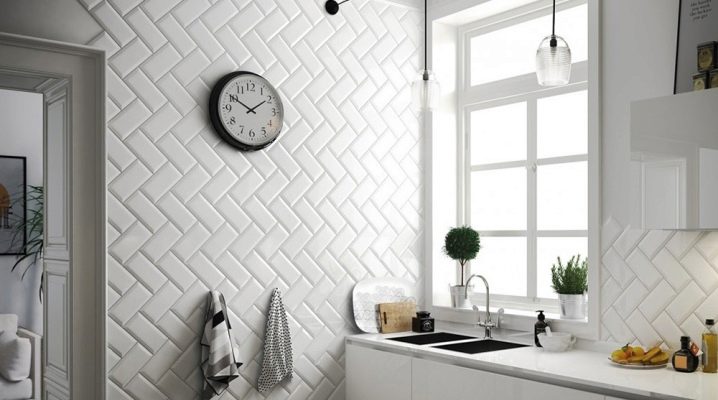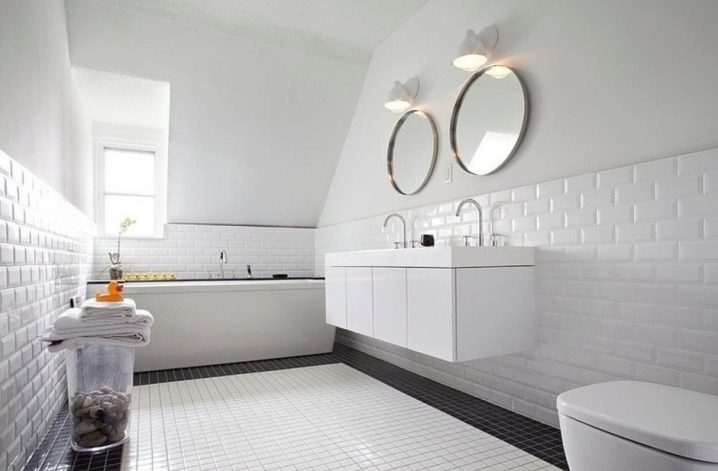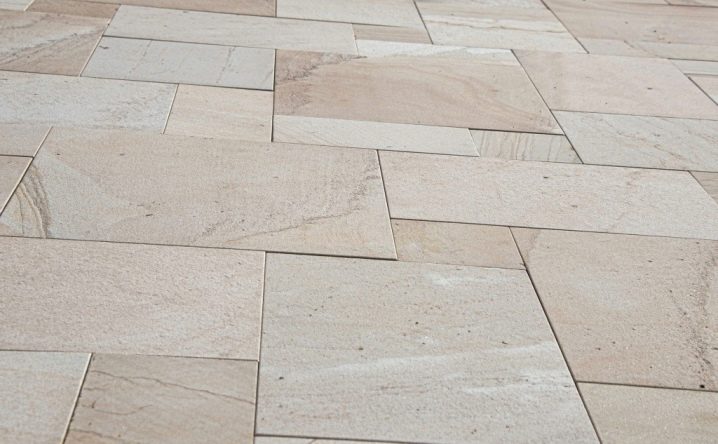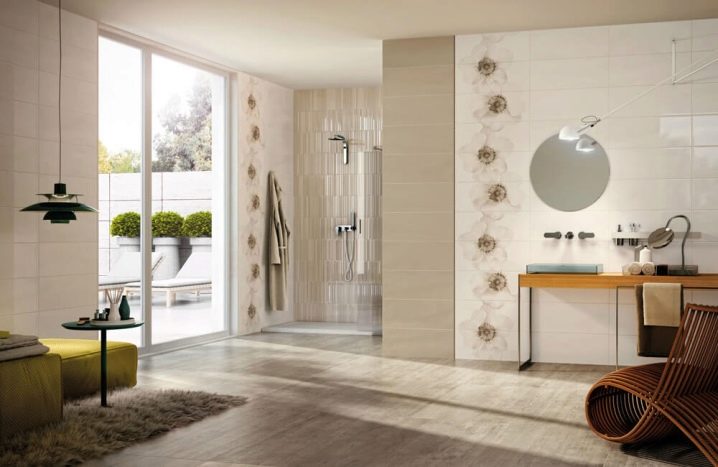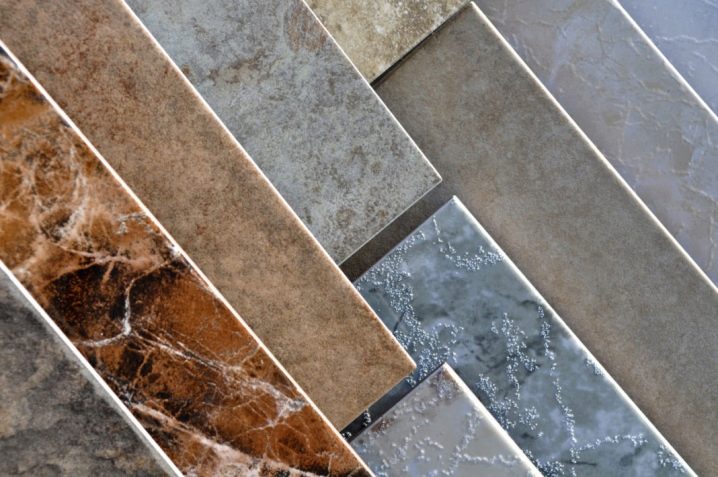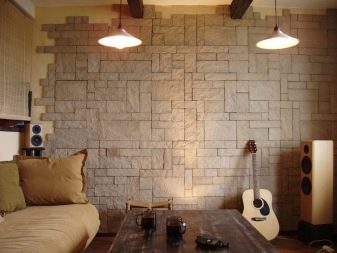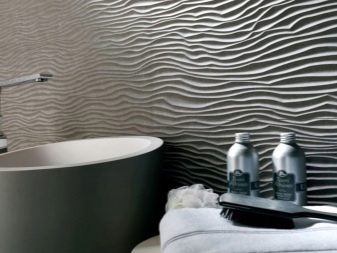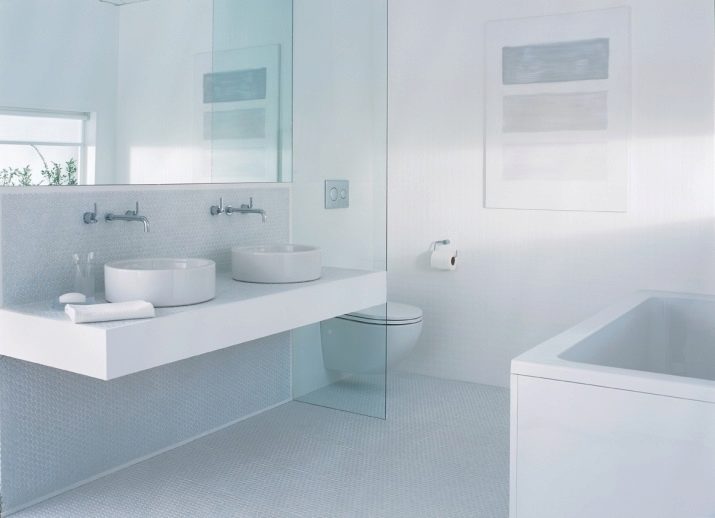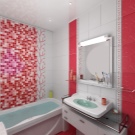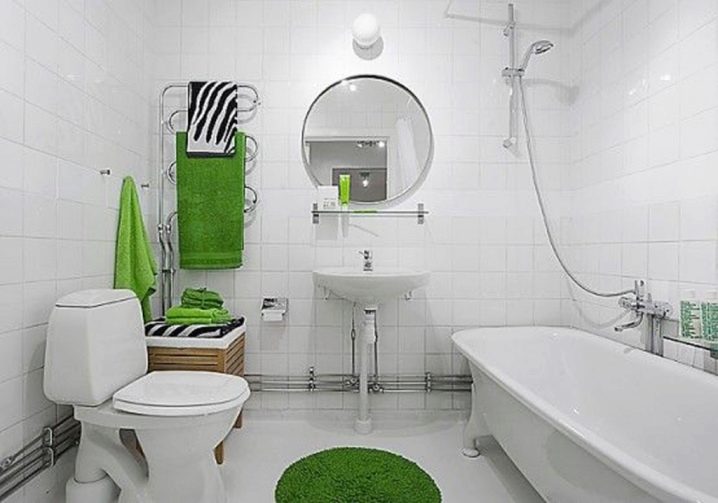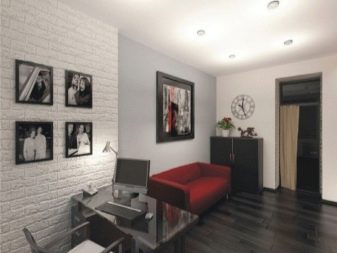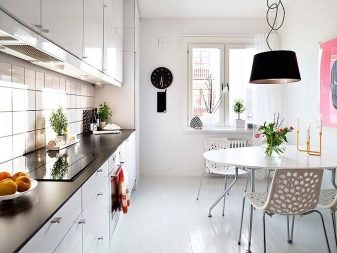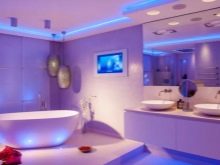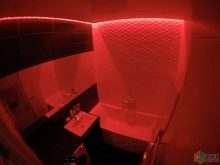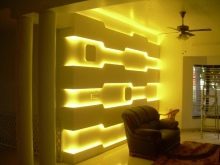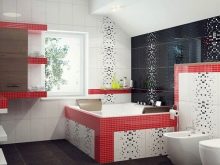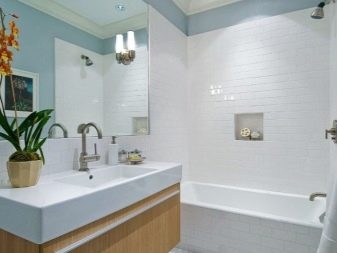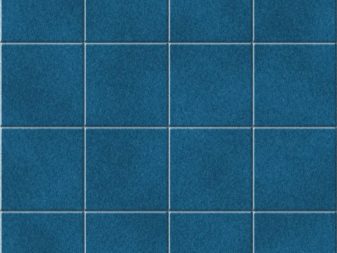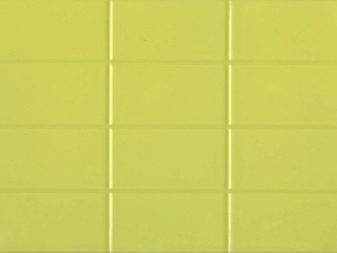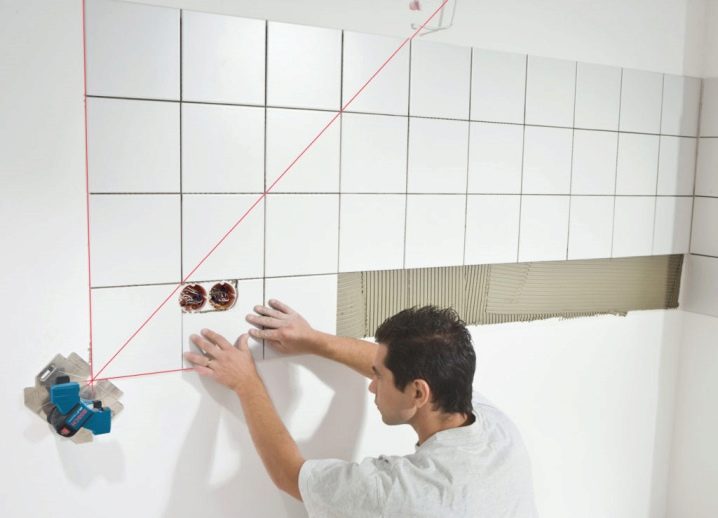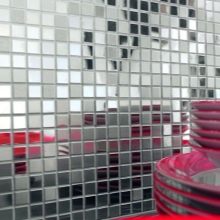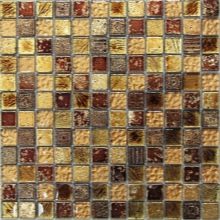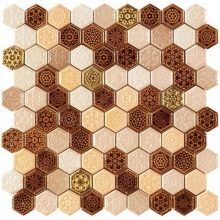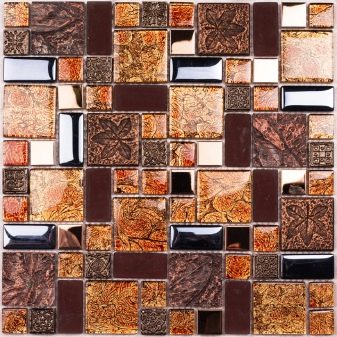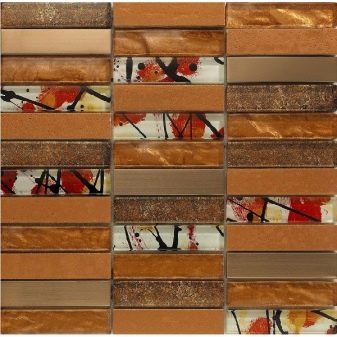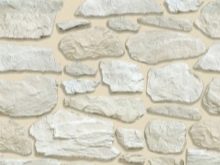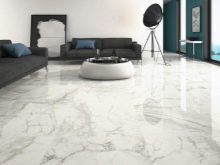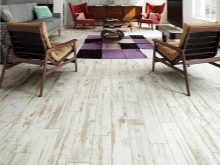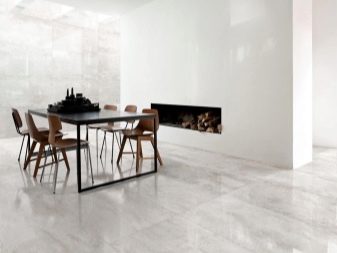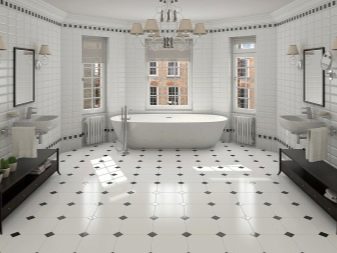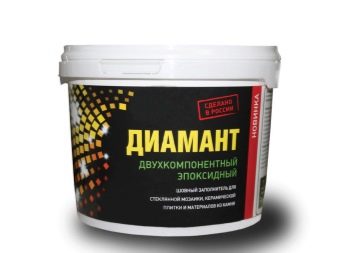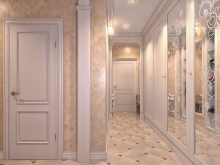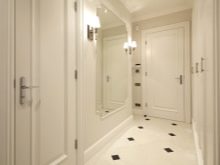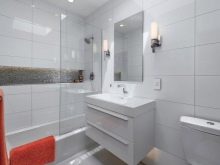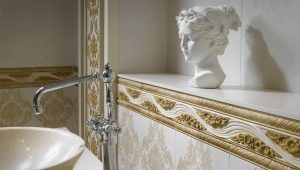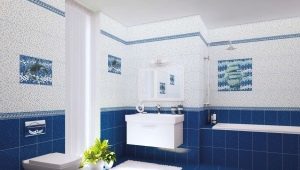White tile: the subtleties of interior design
There is a widespread belief that white in interior design is impractical, gets dirty quickly and generally causes association with the walls of a sterile hospital ward. Some, on the contrary, praise this color and see only advantages in it. Let's take a closer look at this issue on the example of ceramic tiles. What are the features of this color?
Special features
Since ancient times, white color has been associated with tranquility, serenity, ease, and comfort. This color does not irritate the eyes and is neutral. It is perfect for the background of any room, as its combination with other colors is universal. This color visually adds space to space and is therefore perfect for small spaces, such as a bathroom, toilet, kitchen.
It should be noted that in these rooms, as a rule, high humidity, and in the bathroom and everywhere spray.Drops of water, drying on the tile, form a patina unpleasant for the eye, which is most noticeable on colored ceramics. On a white background, it is almost invisible. Here you have the paradox of white color - it would seem Marked color, and in the bathroom, on the contrary, is very practical.
It is a pleasure to care for a white coating. In addition, the white color is always accompanied with the concept of purity and brilliance. Therefore, for the bathroom white tile - the perfect solution.
To choose the right white tile for a specific interior, you need to understand its types. After all, now in the stores there is simply a huge selection of this facing material.
Kinds
Decorative tile is divided into types depending on the method of production. From the very name - "keramos", which from ancient Greek means "baked clay", everything becomes clear. Absolutely any ceramic tile is made of clay. But still tile tile strife. It's all about the additives, the quality of the clay itself and the technology for its creation. Depending on the production method, there are 3 main types of ceramic tiles:
- Monokottura - the universal tile suitable both for a floor, and for walls.It has high strength characteristics, has a thick base and enamel with very high wear-resistant properties. For the price of such tiles is quite expensive due to its massiveness and thickness.
- Biotour - a traditional type of tile. Compared to the previous one, a rather brittle material has low strength properties, but it looks very beautiful and is quite suitable for interior decoration. Accordingly, the price of such a tile will be low.
- Porcelain stoneware. Great for interior flooring, because it contains quartz and feldspar, which makes it extremely durable. In addition, with proper processing, it mimics natural stone, and in terms of strength, it will not yield to natural. This tile is not cheap.
The tiles are made from both red and white clay. And it also matters when choosing. White clay tiles are obtained with a smoother surface, and the edges of such tiles are polished to a perfect condition, which allows it to be laid with a minimum gap.
According to the surface texture, there is a huge variety of ceramic tiles. It is glossy, matte, with artificial cracks, hollows, waves.And it can even be made interspersed with rhinestones and glitters. Here, of course, the choice is yours.
But it is not recommended to use tiles with glitters and other decor in the bathroom. Over time, they fall off, and the tile loses its original appearance.
Design
When decorating rooms in white, be sure to add bright colors. Their texture should be as rich as possible. If we talk about the tile itself, then a faint blue tint will give a cold atmosphere in the room, and cream or beige - a warm one. This feature of white color will allow you to create a background for the design of the original internal space.
And if you still use ceramic tiles of different textures, then this room will become even more interesting. For example, on the floor you can use matte tiles, and on the walls - glossy. You can add a mosaic of different colors to the walls, which will add originality to your room.
Beautiful seamless monochromatic tile looks beautiful. It can be with silver, wavy or with diamonds.
In addition to the interior design of the room does not look boring, for this use some different techniques.For example, one of them is bright colored accessories. If this is a bathroom, then in their role there can be all kinds of floor mats, bright towels, frames for mirrors, soap dishes, holders for brushes and much more, which will help to avoid the monotony of the space.
Plumbing will add refinement and luxury if it is decorated with various golden elements. Glass shelves will look much richer if their fringing is also arranged in a golden color. In addition, you can experiment with contrast by installing plumbing or black furniture. This is quite a bold decision that will look very effective.
If we are talking about a room, then the role of such accessories can be pictures, shelves, furniture, lamps. Bright fruits or vegetables in the white kitchen will look great, diluting the space. To do this, you can use the bowl, which is unobtrusively standing on the table, with red bell pepper, oranges and other bright products. In addition to accessories, you can play with the light.
White tile perfectly reflects the shades of the color spectrum falling on it: ceramic tiles perfectly play the role of a chameleon, which takes on the light that burns in the room.Blue will give the tile a blue tint, red - pink. Yellow will add a warm atmosphere.
LED sources will allow you to change the saturation of the room light according to your mood.
Now quite popular solution in the design of the design is the use of large massive tiles in combination with small mosaic. Mosaic can also be used all sorts of colors. Such a format will certainly give uniqueness to your interior. Textured wall tiles also look very elegant.
If you do not want to use bright colors in your white interior, but you want to see your room exactly in white, then the following techniques will help you. If this is a bathroom, then you can give it the atmosphere of a spa by adding to the white background a variety of plants, shells and pebbles. It will be quite interesting to look at an aquarium with fish serenely swimming in it against the background of mirrors.
Dimensions
Before you go to the store for ceramic tiles, you should decide which size will be the most optimal for your room. There are sizes for each category of ceramic plates, they are distinguished by 3: wall, floor and mosaic tiles.
Wall models
They are both square and rectangular. Standard sizes for square tiles are considered to be 150x150 mm. But size of 100x100 and 200x200 mm is also quite common. The rectangular tile differs in a much greater variety: 25x150, 75x150, 100x150, 100x200, 150x200, 150x225, 250x300, 250x333, 275x400, 150x900, 300x900 mm. However, the standard size of rectangular tiles is considered to be 200x300 mm.
To choose the optimal size, you need to pay attention to several factors. First, you should consider the layout of the tiles on the wall. It is advisable to pre-outline the approximate layout of the pencil for clarity. From this scheme it will be immediately clear how it will fall on the wall and whether it will be necessary to cut it along the edges of the walls.
The best choice is such a choice of dimensions, in which it will not need to be cut at all. Also, after such a markup, it becomes clear how much tile you need. In addition, one rule should be considered: the smaller the tile, the harder it will be to maintain parallelism of the tile joints, especially on uneven sections of the wall.
Floor models
They are also rich in their diversity, and just like wall ones, they are square, the standard size of which is 300x300 mm. But there may be much smaller sizes - from 48x48 mm.Floor tiles can be made rectangular, the dimensions of which are 10x20, 20x30, 10x20, 20x25, 25x40, 30x60, 20x40, 20x10, 25x33, 60x30, 25x35, 25x50, 10x40, 30x10 cm.
But that's not all - floor tiles can also be in the form of a pentahedral (86.5x150, 98x170, 115x200 mm), hexagon (150x173, 170x196, 200x230 mm) and even a triangle (58x83, 68x97, 83x118, 98x139 mm).
Before buying a floor tile, consider the floor area in order to calculate the optimal amount. As in the case of the walls, use a clear diagram of its location.
Mosaic
It is distinguished into a special category of ceramic cladding, since it does not refer to certain standards because of its small size. It represents pieces of ceramics, stone or glass. Due to its miniature size, it can be called a truly versatile material for cladding. Firstly, because it fits perfectly on any uneven surfaces, while hiding their defects, and secondly, it can be used to create real works of art, be it paintings or interesting ornamentation.
To work with a mosaic will need the least amount of glue to perform work. In addition, it is equally suitable for walls, floors and even ceilings. The shape of the mosaic often has a square shape.As for its size, it varies from 10x10 mm to 50x50 mm. In addition, the mosaic is found with round and rectangular components. The largest sizes of such tiles are 100, 200, 250, 300 and 330 mm.
You can fit both long and narrow tile, the choice is always yours. The most common sizes are 25, 30, 40 cm and 60 cm.
Tips for choosing
First you need to decide on the overall design of the room, as well as the decor of its interior. In order not to be mistaken when buying, you should be clear about what you should end up with. In addition to the above aspects regarding its strength characteristics, geometric shape, and pricing, There are some more universal rules:
- Choose white tiles that imitate natural materials - stone, marble, wood. Such an invoice will not look monotonous and boring.
- Choose a tile with a cutting edge (rectified). This edge will minimize the gap and make the seam almost invisible.
- Choose a tile as large as possible. First, it works faster with such tiles and there will be much less joints on the wall.But keep in mind that the larger the tile size - the higher the requirements for the wall surface.
- For grouting it is best to use a special two-component paste based on epoxy glue. It is more expensive than cement-based grouting, but does not absorb moisture and for many years does not lose its qualities, does not fade and does not fall out.
- The color of the grout should be chosen according to the color of the darkest part of the tile itself. For example, if it is a ceramic imitating marble, the darkest shade of the “stone” should be chosen. Such a solution will visually reduce the gap between the elements.
Beautiful examples in the interior
White tiles evoke a sense of calm. It visually expands any room. Also thanks to her, the room is filled with light.
White tile looks great in the hallway, kitchen and bathroom. This neutral color can be combined with any shades.
The dimensions of the standard hallway are quite small. That is why it is preferable to use white color. It will help to visually expand the space.
On how to choose the right tile, see below.
